How to Measure Ring Size: 7 Must-Know Tips Before You Buy a Rings
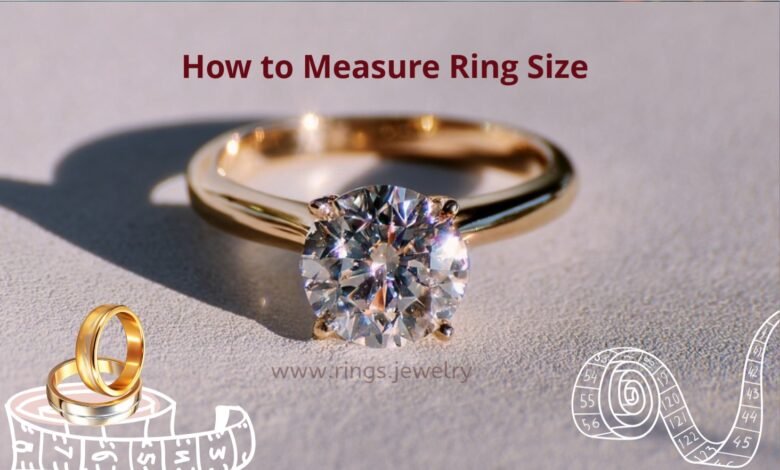
Ring size chart: your secret weapon for getting the perfect fit
A ring size chart might seem like a simple thing—just a bunch of numbers on a page—but don’t be fooled. If you’re planning to buy an engagement ring, gift a piece of jewelry, or treat yourself to something special, that chart can make or break the experience. Yes, seriously. Getting the size wrong isn’t just embarrassing—it’s costly, inconvenient, and can even lead to someone not wearing the ring you carefully chose.




Imagine this: you’ve finally picked the perfect diamond ring after weeks of searching. The setting is flawless, the sparkle is breathtaking, and you’re ready to pop the question. You kneel, open the box, slip the ring on… and it doesn’t fit. It’s either too tight, leaving her wincing and trying to hide her discomfort, or worse—it slides right off. Cue the awkwardness and the stress of resizing a ring that should’ve been just right from the start.
That’s why mastering a ring size chart matters more than you think. It’s not just a tool—it’s peace of mind. It helps you make sure the ring is comfortable, safe, and wearable every day. The fit affects everything: how it looks on the finger, how secure it feels, and how often it’s actually worn. Nobody wants to spend thousands on a ring that ends up in a drawer because it’s uncomfortable or keeps spinning around.
And no, guessing doesn’t work. People’s fingers aren’t one-size-fits-all. Temperature, time of day, knuckle shape, and even lifestyle affect size. A chart helps you translate all that into something solid you can trust. Whether you’re buying online, planning a surprise, or shopping internationally—knowing how to use a ring size chart saves you time, money, and future headaches.
In this article, we’ll break it all down: what a ring size chart is, how to use it the right way, what to avoid, and why it’s one of the smartest things you can rely on when choosing a ring that’s meant to last a lifetime. Let your next milestone shine with help from Chisholm Hunter.
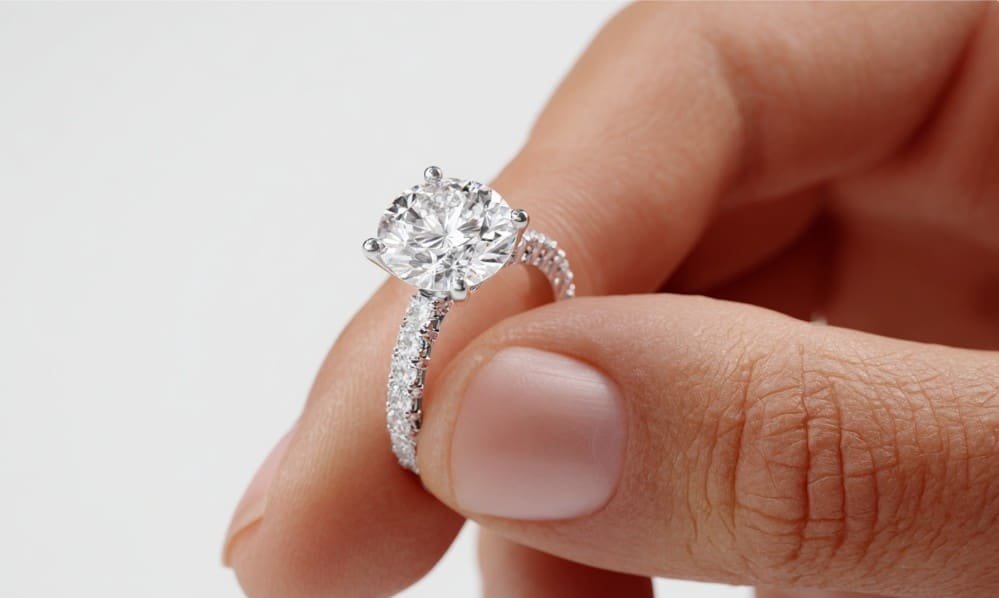
Why getting the right ring size matters more than you think
Let’s get real—most people don’t wear rings that often, until suddenly it matters. Like when you’re about to propose. That’s when the details get serious. And the fit? It’s a big deal.
The size of a ring affects more than comfort. It determines how safe the ring is on the hand. Too loose, and it might slip off when washing hands, working, or even while clapping at a concert. Too tight? It can cut off circulation, cause discomfort, and be nearly impossible to remove on hot days when fingers swell.
Here’s something people rarely talk about: the same finger can be a different size in the morning than it is at night. Our bodies retain fluid differently depending on the time of day, activity level, and even what we eat. Salt, heat, cold—all of it impacts your finger size. So when someone says, “I think she’s a size 6,” that’s like saying, “I think she wears a medium shirt” without checking the brand or the cut.
Let’s also talk about band width. A wide ring (like a thick engagement band or vintage-style setting) feels tighter than a slim band, even in the same size. That means you might need to go up half a size if the design is chunkier than what the person usually wears. On the other hand, a delicate ring might need to fit more snugly to avoid flipping around.
Then there’s the emotional impact. An engagement ring is about feelings. It’s about moments. A ring that doesn’t fit right can ruin a proposal or taint a beautiful gift. It can lead to awkward exchanges and a trip back to the jeweler when you should be celebrating.
That’s why knowing how to get the right size—and using a ring size chart properly—isn’t a small thing. It’s a smart, necessary move. Because nothing says “I paid attention” like a ring that fits perfectly, from the very first try. How to measure her ring size at home
Universal Ring Sizing Made Simple
Here’s the great part—most jewelers in the United States, Canada, and parts of Mexico stick to a standard ring size scale. That consistency makes life easier when shopping for rings—whether it’s a tungsten wedding band or a sleek fashion ring.
Two Easy Ways to Find Your Ring Size
- Use a ring you already wear: Grab a ring that fits well on the same finger and measure its inside diameter with a ruler for a quick size check.
- Wrap and measure: Take a strip of paper, dental floss, or soft string, wrap it snugly around the base of your finger, mark where it overlaps, and measure the length with a ruler to find the circumference.
Why Sizing Can Vary Slightly
Even when using a standard chart, slight size variations can happen. Sometimes it’s due to how tightly you measure, or because the sizing tools used by jewelers differ slightly. Don’t worry—it’s usually no more than a half-size difference.
Choosing the Right Fit with a Size Chart
A detailed ring size chart does more than match you to a number—it helps you shop smarter. Whether you’re buying an engagement ring, stacking band, or a bold tungsten piece, matching your diameter or circumference to the right size ensures the ring feels perfect from the first wear.
Try Our Home Sizing Guide
Want to check your size at home? Download our printable ring sizer and test out different sizes before placing your order. It’s fast, easy, and helps avoid the hassle of resizing later—especially for tungsten rings that are more difficult to adjust.
Pro Tips for the Best Fit
- Measure your finger when it’s at a normal temperature—not after exercise or in cold weather.
- If your ring has a wide band (like many tungsten styles), go up half a size for a more comfortable fit.
- Recheck your size at different times of day to confirm consistency.
Confidence in Every Purchase
Getting the size right means the ring feels as good as it looks. Whether you’re celebrating a big milestone or upgrading your jewelry collection, taking the time to measure carefully makes all the difference. With the right ring size chart and a little prep, your tungsten ring will deliver style, comfort, and lasting quality.
Ring Size Measurement Chart
Ring Size Chart
This detailed chart helps you find the correct ring size based on diameter and circumference in both millimeters and inches. Use it to ensure a comfortable, accurate fit for any ring style.
| Ring Size | Diameter (mm) | Circumference (mm) | Diameter (in) | Circumference (in) |
|---|---|---|---|---|
| 3 | 14.1 | 44.3 | 0.55 | 1.74 |
| 3¼ | 14.3 | 44.9 | 0.56 | 1.77 |
| 3½ | 14.5 | 45.6 | 0.57 | 1.79 |
| 3¾ | 14.7 | 46.2 | 0.58 | 1.82 |
| 4 | 14.9 | 46.8 | 0.59 | 1.84 |
| 4¼ | 15.1 | 47.4 | 0.59 | 1.87 |
| 4½ | 15.3 | 48.1 | 0.60 | 1.89 |
| 4¾ | 15.5 | 48.7 | 0.61 | 1.92 |
| 5 | 15.7 | 49.3 | 0.62 | 1.94 |
| 5¼ | 15.9 | 50.0 | 0.63 | 1.97 |
| 5½ | 16.1 | 50.6 | 0.63 | 1.99 |
| 5¾ | 16.3 | 51.2 | 0.64 | 2.02 |
| 6 | 16.5 | 51.8 | 0.65 | 2.04 |
| 6¼ | 16.7 | 52.5 | 0.66 | 2.07 |
| 6½ | 16.9 | 53.1 | 0.67 | 2.09 |
| 6¾ | 17.1 | 53.7 | 0.67 | 2.12 |
| 7 | 17.3 | 54.3 | 0.68 | 2.14 |
| 7¼ | 17.5 | 55.0 | 0.69 | 2.17 |
| 7½ | 17.7 | 55.6 | 0.70 | 2.19 |
| 7¾ | 17.9 | 56.2 | 0.71 | 2.22 |
| 8 | 18.1 | 56.9 | 0.71 | 2.24 |
| 8¼ | 18.3 | 57.5 | 0.72 | 2.27 |
| 8½ | 18.5 | 58.1 | 0.73 | 2.29 |
| 8¾ | 18.7 | 58.7 | 0.74 | 2.32 |
| 9 | 18.9 | 59.4 | 0.75 | 2.34 |
| 9¼ | 19.2 | 60.3 | 0.75 | 2.37 |
| 9½ | 19.4 | 60.9 | 0.76 | 2.39 |
| 9¾ | 19.6 | 61.6 | 0.77 | 2.42 |
| 10 | 19.8 | 62.2 | 0.78 | 2.44 |
| 10¼ | 20.0 | 62.8 | 0.79 | 2.47 |
| 10½ | 20.2 | 63.5 | 0.79 | 2.49 |
| 10¾ | 20.4 | 64.1 | 0.80 | 2.52 |
| 11 | 20.6 | 64.7 | 0.81 | 2.54 |
| 11¼ | 20.8 | 65.3 | 0.82 | 2.57 |
| 11½ | 21.0 | 66.0 | 0.83 | 2.59 |
| 11¾ | 21.2 | 66.6 | 0.83 | 2.62 |
| 12 | 21.4 | 67.2 | 0.84 | 2.65 |
| 12¼ | 21.6 | 67.9 | 0.85 | 2.67 |
| 12½ | 21.8 | 68.5 | 0.86 | 2.70 |
| 12¾ | 22.0 | 69.1 | 0.87 | 2.72 |
| 13 | 22.2 | 69.7 | 0.87 | 2.75 |
| 13¼ | 22.4 | 70.4 | 0.88 | 2.77 |
| 13½ | 22.6 | 71.0 | 0.89 | 2.80 |
| 13¾ | 22.8 | 71.6 | 0.90 | 2.82 |
| 14 | 23.0 | 72.3 | 0.91 | 2.85 |
| 14¼ | 23.2 | 72.9 | 0.91 | 2.87 |
| 14½ | 23.4 | 73.5 | 0.92 | 2.90 |
| 14¾ | 23.6 | 74.1 | 0.93 | 2.92 |
| 15 | 23.8 | 74.8 | 0.94 | 2.95 |
| 15¼ | 24.0 | 75.4 | 0.95 | 2.97 |
| 15½ | 24.2 | 76.0 | 0.95 | 3.00 |
| 15¾ | 24.4 | 76.7 | 0.96 | 3.02 |
| 16 | 24.6 | 77.3 | 0.97 | 3.05 |
What exactly is a ring size chart—and why should you trust it?
A ring size chart is a jeweler’s cheat code. It’s a printed or digital guide that shows standard ring sizes, usually matched with finger measurements in millimeters. Depending on where you live, ring sizes can be numbers (like in the US) or letters (like in the UK). The chart helps you convert these sizes into real-life measurements—diameter and circumference—so you can be confident in your purchase.
Think of it as a translator. It takes the mystery out of those little numbers printed inside rings and shows you what they mean in the real world. Whether you’re trying to guess your partner’s size based on a ring they already wear, or you’re ordering online from another country, the chart bridges the gap.
Most charts include:
- Inside diameter (mm) – the straight-line distance across the inside of the ring.
- Inside circumference (mm) – the full loop around the inside of the ring.
- Size conversion – how that measurement matches with US, UK, European, or other size standards.
Some charts even show how wide a ring should feel on the finger, depending on the band width. If you’re buying a wide band, you’ll often need to size up slightly for comfort. That nuance is something a good chart helps you navigate.
People often ask if all charts are the same. The truth? Most reputable charts are accurate, but not all hands are the same. That’s why the chart is just one part of the puzzle. You also need to factor in the person’s hand shape, knuckle size, lifestyle, and even the season. For example, someone with large knuckles and slimmer fingers may need a different fit than someone whose fingers are consistently even in width.
But if you’re looking for a smart starting point that works in 90% of situations, a solid ring size chart is your go-to. It eliminates guesswork, builds confidence, and turns sizing into a logical, repeatable process—not a gamble.
So yes, trust the chart. Just use it smartly.
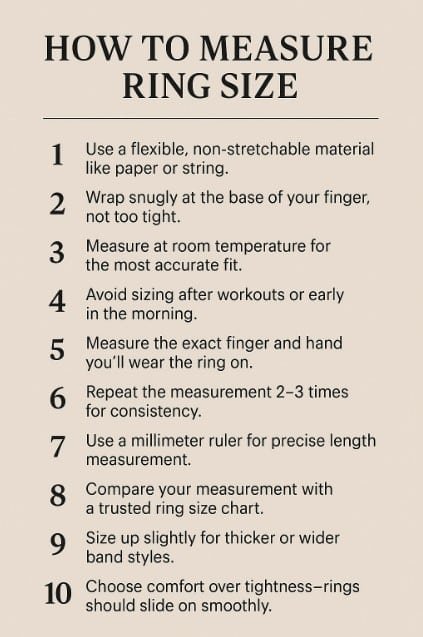
Step-by-step: how to use a ring size chart like a jeweler
Alright, here’s where we roll up our sleeves and get hands-on. Using a ring size chart isn’t rocket science, but doing it wrong leads to bad results. So here’s a simple, expert-approved method to get it right the first time.
1. Choose your measuring method
You’ve got two options:
- Use an existing ring: Ideal if your partner already wears one on the same finger (ring finger, left hand).
- Measure the finger directly: Great if they’re with you and you can get away with being a little sneaky or straightforward.
2. Measure accurately
If you’re using an existing ring:
- Lay the ring flat on a ruler.
- Measure the inside diameter in millimeters (not inches).
- Find that number on the ring size chart and match it with the correct size.
If you’re measuring the finger:
- Cut a thin strip of paper.
- Wrap it around the base of the finger (snug but not tight).
- Mark where it overlaps.
- Measure that length in millimeters—this gives you the circumference.
- Look it up on the chart and match it with the size.
Pro Tip: Do this at room temperature, not right after a workout or on a cold morning. Fingers change size throughout the day. Midday is usually best.
3. Consider ring style
Thicker bands = tighter fit. If the ring you’re buying has a thick band (like a bold engagement ring with a wide base), go up half a size. If it’s thin and delicate, go with the true size or even down a bit to avoid movement.
4. Factor in the knuckle
If your partner has a bigger knuckle and a slim finger base, go with a slightly larger size. If you size only for the base, it may not slide over the knuckle comfortably.
5. Triple-check
Once you’ve got a number from the chart, test it—print out the chart, use a sizing ring, or ask the jeweler for a quick test. This step is essential if the ring can’t be resized later.
Real-life example? Someone used their girlfriend’s favorite fashion ring to guess her size. Measured it, matched it on the chart—size 6. But it was a thick band. So they adjusted to 6.5. When the engagement ring arrived, it fit like a dream. That’s the power of using the chart right.
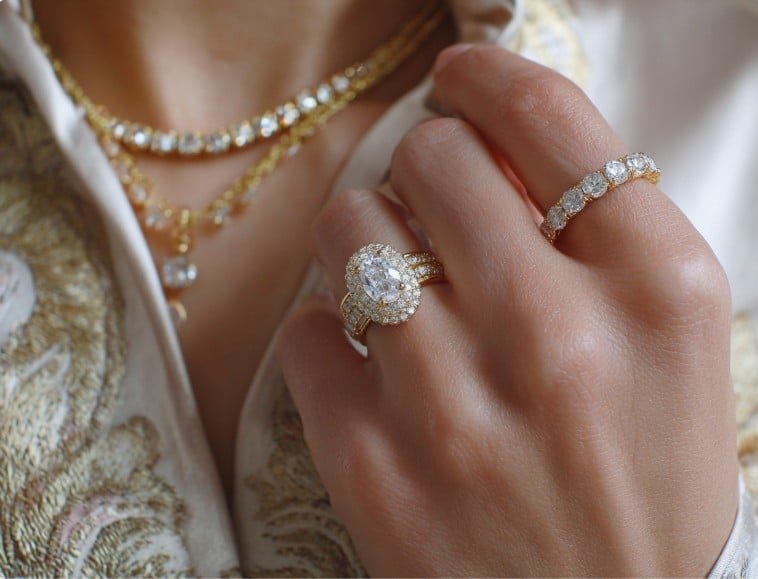
Common mistakes people make with ring sizing (and how to avoid them)
Let’s talk about the mistakes—because there are a lot of them, and they happen more often than you’d think. Getting the wrong ring size isn’t just a simple oops; it can cost money, time, and emotional energy. And when it comes to something as meaningful as an engagement ring or a surprise gift, you want to get it right the first time.
Mistake #1: Guessing the size based on appearance
This is the classic blunder. You look at someone’s hands and think, “She’s petite, so probably a size 5.” Nope. Finger size doesn’t directly correlate with height or build. Two people of the same size can have wildly different finger shapes. One might have slender fingers with bony knuckles; the other, shorter fingers with more soft tissue. Always measure.
Mistake #2: Using string or paper carelessly
Measuring with a string or a paper strip can work—but only if you do it precisely. People tend to pull the string too tight or use stretchy materials that change shape. That leads to a ring that fits like a vise or spins like a top. If you’re using paper, make sure it’s firm, not stretchy. Wrap it snug, but not tight, and always measure in millimeters.
Mistake #3: Measuring at the wrong time of day
Yes, time matters. Fingers swell and shrink. First thing in the morning or after a hot shower, your fingers are likely to be puffier. On cold mornings? You’ll size down without realizing. Midday—around lunchtime—is the best time to measure. Your hands are at a natural temperature and not influenced by sleep or movement.
Mistake #4: Not accounting for knuckle size
The knuckle is often the widest part of the finger. If you only measure the base and ignore the knuckle, the ring may never get past it. On the other hand, if you size for the knuckle and the ring spins at the base, it’s also a problem. You need a balance—somewhere in the middle. A good jeweler can guide you, or use a sizing chart that considers these nuances.
Mistake #5: Forgetting about the ring’s design
A thin, dainty band fits differently from a thick, solid one. If your ring has a wide base, pave settings, or a bold design, it will feel tighter. Always size up slightly in those cases. A minimalist design? Go true to size or slightly down.
Mistake #6: Not confirming the sizing system
Ring sizes vary by country. A US size 6 isn’t the same as a UK size M. If you’re buying online or internationally, make sure you’re using the correct size system. A ring size chart will usually show all the conversions. Don’t assume the seller uses your country’s standard—always ask or double-check.
Avoiding these common mistakes isn’t complicated, but it does take attention to detail. Take an extra five minutes to measure properly, verify with a chart, and understand the ring style you’re buying. The reward? A flawless fit that says you cared enough to get every detail just right.
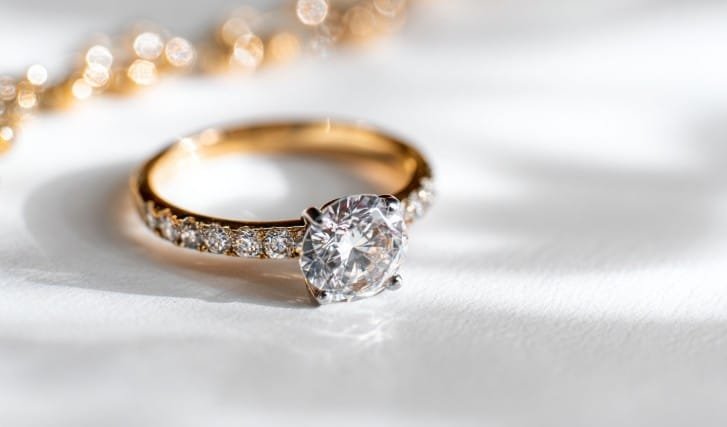
Ring sizing for surprise proposals – the smart way to guess
Proposing without your partner knowing? That’s romantic, but it also makes getting the ring size right a lot trickier. You can’t exactly ask, “Hey, what’s your ring size?” without giving the whole game away. So, what do you do?
There are a few creative, tried-and-true methods to secretly find the right size—or at least get close enough for the ring to slide on during the proposal moment.
1. Borrow one of their rings
The classic move. If your partner wears a ring on the correct finger (left ring finger), take it when they’re not wearing it and trace it on paper or press it into a bar of soap to get the shape. Just make sure it’s from the right hand and finger. The dominant hand is usually slightly larger, so be cautious if the ring comes from the right hand.
Once you have it, use a ring size chart to measure the inner diameter or circumference and match it up.
2. Ask a friend or family member
Sometimes a sibling or best friend knows the size already. If not, they might be able to help you find out by casually going ring shopping together or dropping a not-so-subtle hint in conversation. This works especially well if the friend can play it off like it’s just for fun.
3. Get sneaky with crafts or play
If you and your partner ever do DIY or crafts together, try suggesting a fun “let’s measure our hands” game. Use that moment to slip a small paper strip around their ring finger and remember the size—or snap a pic for later.
4. Measure while they sleep
A bit of a spy move, but people have done it. If your partner’s a deep sleeper, you can gently wrap a string or paper around their finger. Just don’t make it too tight, and measure quickly. This is risky, but sometimes works!
5. Go with an average
If all else fails and you truly have no way to get the size, go with the average. Most women fall between size 5 and 7. Size 6 is the most commonly purchased size for engagement rings. It’s not foolproof, but it increases your odds. Also, choose a design that allows for resizing later—some bands and settings are easier to adjust.
And here’s the golden rule: always keep the receipt and ask the jeweler about resizing options. Even with all the clever tricks in the book, it’s possible to get it slightly off. The goal for the proposal is that the ring fits well enough to slide on, look beautiful in photos, and stay secure until a final fitting.
Getting the size perfect is wonderful, but getting close enough for the moment is just as meaningful. The emotional impact of a surprise proposal matters more than a 0.25 size error.

How ring width affects fit – the hidden detail no one tells you
Here’s something most people never consider: the width of the ring band has a huge impact on how the ring feels. This small detail is often overlooked, yet it can be the difference between a perfect fit and a tight squeeze.
What is ring width?
It’s the thickness of the band from top to bottom. Thin bands (1.5–2 mm) feel looser and more delicate. Wider bands (5–10 mm or more) hug the finger more tightly. Why? Because they cover more surface area, pressing against more skin, which can make the same size feel smaller.
Why does it matter when choosing a size?
If you measure your partner’s finger using a thin ring, and then buy a thick, statement-style engagement ring, the fit will feel tighter—even if the size number is the same. That’s why jewelers often recommend going up half a size when choosing a wide band. It gives the finger more breathing room and ensures all-day comfort.
Let’s say your partner wears a size 6 thin stacking ring. If you buy a thick engagement ring band that’s 6 mm wide, sizing up to 6.5 is smart. That small tweak avoids the dreaded finger pinch and keeps the ring wearable all day long, in any season.
Special considerations
- Stacking rings: Wearing multiple rings together tightens the overall feel. If you’re buying two or three rings to be worn together (like an engagement ring and wedding band set), you might need to size up slightly.
- Comfort-fit bands: Some rings are designed with a rounded inner edge. These slide on easier and feel smoother. A comfort-fit wide band may not need to be sized up as much as a flat inner edge band.
- Activity level: If your partner works with their hands, plays sports, or swells easily in the heat, a tight wide band can become unbearable. Always opt for comfort over a “perfectly snug” fit.
Understanding how width changes fit makes you a smarter buyer. It’s one of those expert-level tips that separates a basic purchase from a thoughtful one. And it shows—you cared enough to think about the little things that make a big difference.
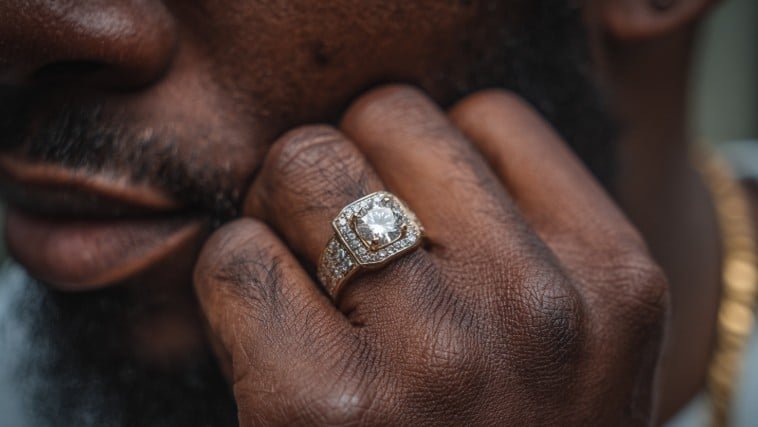
When to size up or down: subtle clues you shouldn’t ignore
Not all fingers are created equal—and that’s not just about width or length. Choosing whether to size up or down when using a ring size chart is a skill that combines observation, intuition, and experience. Here’s how you can make the best decision, even if you’re not a jeweler.
1. If your partner’s fingers swell easily
Some people experience regular finger swelling due to temperature changes, hormones, salty food, or even stress. If your partner often complains about tight rings, bracelets, or watches, that’s a clue. In these cases, size up slightly. Better to have a comfortable fit than a ring that becomes a struggle to remove on a warm day.
2. If they have large knuckles
Here’s a common but often ignored problem: the knuckle is significantly larger than the base of the finger. In this case, you have a tough decision to make. A ring that fits over the knuckle may be loose at the base, while a ring that sits perfectly at the base may never make it over the knuckle.
Pro tip: go with the larger size and consider adding a sizing assistant inside the ring. These are small, discreet bumps added by jewelers to help the ring grip the base of the finger without making it impossible to remove.
3. If they wear their rings high or low
Some people like their rings to sit tight at the base of the finger. Others prefer a looser feel that allows the ring to move around a bit. Pay attention to how your partner wears their current rings. If they fidget, twist, or remove them often, that’s a sign the current fit may not be ideal.
4. If the ring is a surprise
When guessing, it’s safer to go slightly larger than smaller. A slightly loose ring can still be worn for a proposal or photo. A ring that’s too tight, though, may not even go on—and that ruins the magic of the moment.
5. If the ring cannot be resized easily
Some ring designs—like eternity bands or those with complex side stones—can’t be resized. In that case, you need to be even more careful. If there’s any uncertainty at all, go for a design that allows minor future adjustments. Talk to the jeweler about sizing limitations before you commit.
Sizing up or down isn’t just about numbers—it’s about comfort, lifestyle, and how the ring will be worn day after day. When in doubt, size for real life—not just a brief try-on moment.
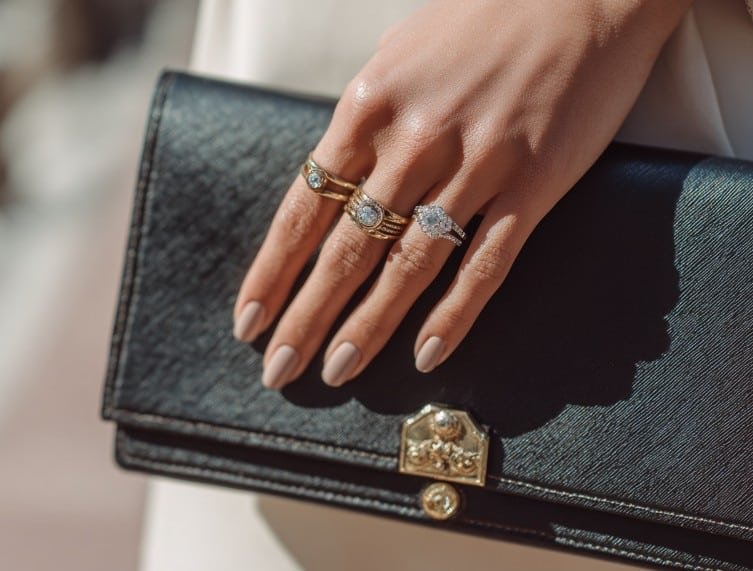
Printable ring size charts vs. physical sizers: which works better?
If you’ve searched for ring sizing help online, you’ve probably seen two options: printable ring size charts and physical ring sizers. So, which one should you trust more? Let’s break it down.
Printable Ring Size Charts
These are PDFs you download and print at home. They usually include:
- A ruler to measure the inner diameter of an existing ring
- A size circle guide to place a ring over
- A sizing strip you cut out and wrap around your finger
Pros:
- Quick, easy, and free
- Great if you already have a ring to measure
- Good for estimating when time is short
Cons:
- Accuracy depends on your printer’s scale (and most people don’t check that)
- Paper can stretch, curl, or tear
- User error is common—especially if you don’t measure tight enough or too tight
If you’re in a pinch or just exploring size options, a printable chart is fine. But double-check your printer settings and always measure twice.
Physical Ring Sizers
These are plastic or metal tools used by professional jewelers. You can also buy them online for a few bucks. They come in two types:
- A keyring-style loop with plastic rings in every size
- A flexible strip that tightens around your finger like a zip tie
Pros:
- Extremely accurate
- Reusable and reliable
- Offers a “real feel” of how a ring would fit
Cons:
- Slight cost involved
- Needs to be ordered in advance if you don’t visit a jeweler
If you’re serious about buying an engagement ring, investing in a physical sizer is worth every penny. It eliminates guesswork and ensures confidence in your purchase.
Bottom Line
For quick estimates? Printable chart.
For precise sizing, especially with expensive rings? Physical sizer.
Think of it like this: would you buy a tailored suit using just a paper measuring tape, or would you rather get measured in person with proper tools? Same idea.
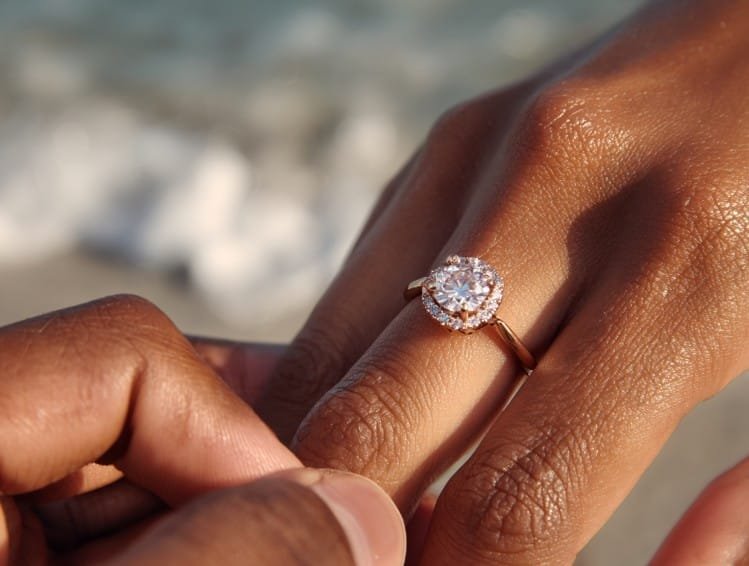
How different countries use different ring size systems
Here’s where things get a bit international—and potentially confusing. Not every country uses the same ring size system. So, if you’re ordering from an international jeweler or shopping while traveling, you need to understand how to translate sizes accurately.
US and Canada
These countries use a numerical sizing system with full, half, and quarter sizes. For example: 5, 5.5, 6, 6.25, etc. It’s the most common system used online, especially by large retailers.
UK, Ireland, Australia
These regions use letters instead of numbers. Sizes range from A (smallest) to Z+ (largest), often with half sizes like M½ or N½. A US size 6 is roughly a UK size L½.
Europe (France, Germany, etc.)
These countries typically use the inner circumference of the ring in millimeters. So a European size 52 means the inside of the ring is 52 mm around. It’s a straightforward system, but not always intuitive if you’re used to US sizes.
Asia (Japan, China, etc.)
These countries use a numerical system as well, but it’s based on slightly different measurements than the US. A Japanese size 12, for example, isn’t the same as a US size 12—it’s closer to a US 6.5.
How to Convert Sizes Easily
This is where your ring size chart becomes a superhero. A good chart will show all the conversions side by side:
- US size
- UK letter
- European mm size
- Japan/Korea size
If you’re buying a ring from a country with a different sizing system than yours, always use a conversion chart before confirming your order. Never assume that size 7 means the same thing everywhere.
One Smart Trick
If you’re buying internationally and unsure about conversions, ask the seller what measurement they need: inner diameter or circumference. These are universal and can be plugged into any chart.
Ring sizing may seem like a small detail, but when you’re crossing borders, it becomes mission-critical. Treat it with the same attention you’d give to the diamond cut or the ring setting—and you’ll avoid a lot of potential stress.

Resizing risks: what you should know before choosing the size
Here’s something most people don’t realize until it’s too late: not all rings can be resized. That’s right. You might think you can just buy now and fix it later, but depending on the ring design, resizing may not even be an option. That’s why getting it right the first time—with the help of a reliable ring size chart—isn’t just smart. It’s essential.
Rings that are hard or impossible to resize:
- Eternity bands (stones all the way around the ring): Since the gems cover the entire band, there’s no plain metal to cut or stretch. Attempting to resize these could damage the structure or the stones.
- Intricate designs: Some rings have delicate engraving, milgrain edges, or pave stones that run along the band. Any resizing could distort the pattern or cause tiny stones to fall out.
- Alternative metals: Rings made from tungsten, titanium, ceramic, or stainless steel often can’t be resized. These metals are too hard or brittle to safely stretch or compress.
What resizing involves (when it’s possible):
- Sizing down: Jewelers cut out a small piece of the band, then solder it back together and polish it.
- Sizing up: They stretch the metal slightly or add an extra piece. Stretching only works for small adjustments.
Potential downsides of resizing:
- Weakened structure: Cutting and rejoining a band can weaken the metal, especially if done more than once.
- Visible seam or color difference: If the metal isn’t blended perfectly, there may be a faint line where the ring was altered.
- Extra cost: Resizing usually costs money—anywhere from $30 to $100+, depending on complexity.
So, what does this mean for you? It means that using a ring size chart—and using it correctly—saves you from depending on resizing later. If you’re buying a ring that can’t be resized, getting the size right the first time becomes even more important. And even if it can be adjusted, it’s always better to avoid unnecessary metalwork on a new ring.
Pro Tip: If you’re unsure about the exact size and you’re buying a ring that can be resized, choose a plain metal band or a simple solitaire setting. These are the easiest and safest to adjust later.
Bottom line? Resizing is a backup—not a plan. Aim for precision from the start, and you’ll avoid the need to fix a beautiful ring that should’ve been perfect from day one.
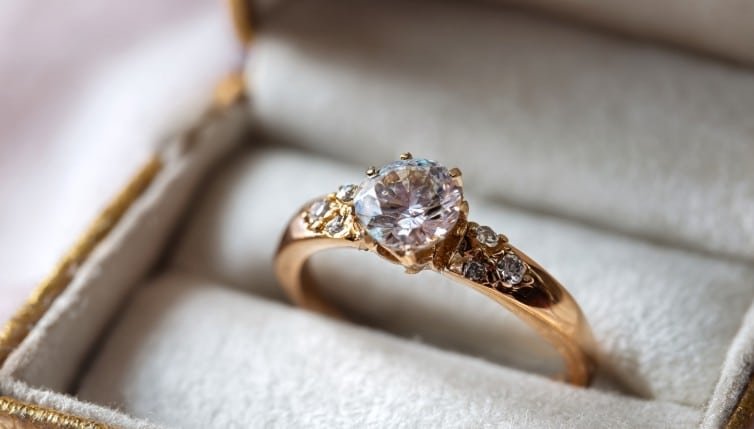
Ring sizing tips for different finger shapes and lifestyles
Rings are personal. So is the shape of each person’s hands. What fits one person comfortably might feel too loose or tight on someone else—even in the same size. To really get it right, you need to match the ring size with the finger type and daily lifestyle.
Finger shape types & what to consider:
1. Slim fingers with small knuckles
- These fingers need a snug fit or the ring might slide off.
- Choose a slightly tighter fit—but not tight enough to cause discomfort.
- Rings with low profiles and lighter weight work best; heavier rings may rotate.
2. Slim fingers with large knuckles
- The ring must pass over the knuckle, which may mean it feels loose once on.
- Consider adding sizing beads inside the ring or choosing a comfort-fit band.
- Avoid heavy top-weighted designs that will rotate often.
3. Short, wider fingers
- Opt for thinner bands to avoid making the finger appear even wider.
- A perfect fit should feel secure but not tight.
- Avoid stacking multiple bands unless the fingers taper at the base.
4. Athletic or working hands
- Active lifestyles cause fingers to fluctuate in size.
- Go for durability over daintiness—especially in rings that are worn every day.
- Choose comfort-fit styles and slightly roomier sizes to accommodate swelling.
5. Aging hands or changing bodies
- With age, joints may swell, and skin may become more sensitive.
- It’s smart to choose adjustable bands or rings that are easy to take off.
- For gifts to elderly loved ones, always consider comfort over tightness.
Daily lifestyle tips:
- Nurses, mechanics, chefs, or people who wash hands often may need to remove rings throughout the day. Choose a size that’s easy to take off without falling off unexpectedly.
- People in hot climates might size down slightly to avoid swelling issues.
- Musicians or keyboard-heavy jobs need low-profile bands that don’t get in the way.
When you use a ring size chart, you’re working with a number—but it’s your knowledge of the person behind the number that makes the fit truly perfect.
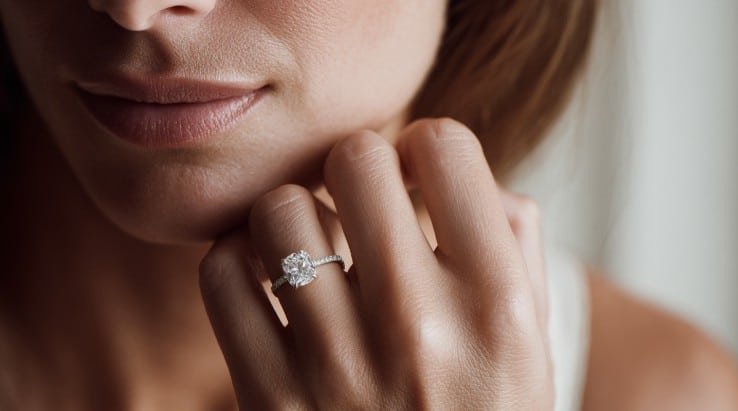
Final expert tips for choosing the perfect size every time
You’ve made it this far, and by now you know the ring size chart isn’t just a reference—it’s your ally. But before you buy, here are a few last pro tips to help lock in the right size confidently, comfortably, and with peace of mind.
1. Size in the right season
People’s fingers expand in heat and contract in cold. If you’re measuring in the winter, consider going up a quarter size. Summer? Be cautious about temporary swelling that could lead you to size too big.
2. Check size more than once
Never trust a single measurement. Measure two or three times, ideally on different days and times. If the results vary slightly, average them out.
3. Watch out for dominant hand differences
Your dominant hand (the one you write with) usually has slightly thicker fingers. Don’t assume the right ring finger equals the same size as the left. Always size for the correct finger.
4. Comfort beats tightness
A ring that feels snug in a store might feel uncomfortable hours later. Comfort-fit bands, rounded inner edges, and the right band width all contribute to better wearability.
5. Leave room for resizing—if possible
Unless you’re buying a non-resizable style, aim for a ring design that allows minor changes. Engagements are forever, but bodies change. Having flexibility is smart planning.
6. Communicate with your jeweler
A good jeweler will ask the right questions: Is the ring a surprise? How wide is the band? What’s their lifestyle? If they don’t ask—you should. Being proactive saves you frustration later.
Choosing a ring size is one part science, one part intuition. It’s not just about fitting a circle onto a finger. It’s about making someone feel seen, celebrated, and totally at ease. And that starts with a fit that’s so natural, they never want to take it off. how tofind out your ring size
The right fit makes everything better
Choosing a ring is about love, celebration, and making memories. But when that ring doesn’t fit? The sparkle fades a little. Using a ring size chart might seem like a small step—but it’s actually one of the smartest moves you can make. It turns a guess into confidence, and a moment into a memory that feels perfect.
Whether you’re planning a surprise proposal, shopping together with your partner, or gifting a piece that marks something special—getting the size right means the ring doesn’t just look beautiful, it feels like it belongs.
So take the time, grab the chart, measure thoughtfully, and choose with care. Because the right size isn’t just about millimeters—it’s about meaning. how to find out your ring size
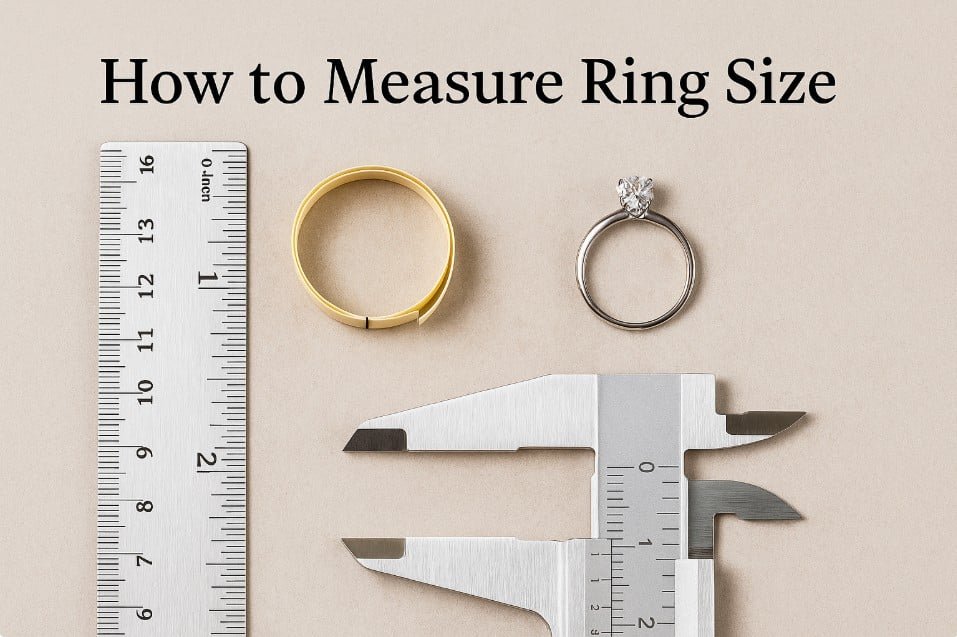
FAQs

Answer 1: Wrap a thin strip of paper or non-stretch string around the base of your finger. Mark where it overlaps, then measure the length with a ruler in millimeters. Use that measurement to compare against a standard ring size chart. Always measure at room temperature for best accuracy.

Answer 2: Midday or early evening is ideal. Avoid measuring right after waking up (when fingers are smaller) or after exercise or a hot shower (when fingers are swollen). For the most reliable result, measure at the time of day your hands feel most relaxed and normal.

Answer 3: A properly fitted ring should slide on easily and resist coming off without force. It should feel secure at the base of the finger without digging in or rotating loosely. You should be able to push it over the knuckle with mild resistance, but not struggle or feel pain.

Answer 4: Borrow a ring they already wear on the correct finger and trace the inside on a piece of paper or measure its diameter with a ruler. If that’s not possible, ask someone close to them or create a casual situation where their finger can be measured with a string or sizing strip.

Answer 5: Yes, it does. Fingers on the dominant hand are typically ¼ to ½ size larger than the same finger on the non-dominant hand. Each finger is shaped differently too, so never assume the size of one hand applies to the other. Always measure the exact finger the ring will be worn on.
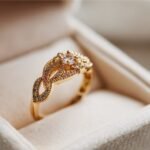
Answer 6: Absolutely. Wider bands cover more surface area and tend to feel tighter. For rings wider than 6 mm, it’s common to go up half a size for comfort. This prevents the ring from feeling constrictive during daily wear, especially on warmer days or during physical activity.

Answer 7: You can, but be cautious. Apps and printable charts can work, but only if printed or scaled correctly. Always follow the tool’s instructions closely and double-check your results by measuring more than once. For high-value rings, consider confirming your size with a physical ring sizer.
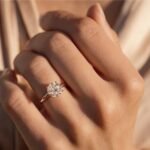
Answer 8: Use a strip of paper or soft string to wrap around the base of your finger. Mark where it overlaps and measure the length in millimeters. Match this number to a standard ring size chart to find the right size. Always measure 2–3 times for accuracy.
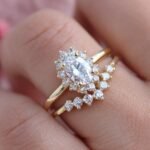
Answer 9: A US ring size 7 fits a finger with an inner circumference of approximately 54.4 mm and a diameter of about 17.3 mm. It’s one of the most common sizes for women’s rings and offers a comfortable fit for average-sized fingers.
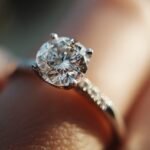
Answer 10: A size 8 ring typically fits a finger with a 57 mm circumference and 18.1 mm diameter. It’s slightly larger than average and often chosen by women with fuller fingers or those who prefer a looser fit, especially for wider band styles.

Answer 11: Ring size 10 is considered large for women and average for men. It fits a finger with roughly 62.2 mm in circumference and 19.8 mm in diameter. Common for men’s wedding bands or women with larger knuckles or wider hands.
to measure ring size
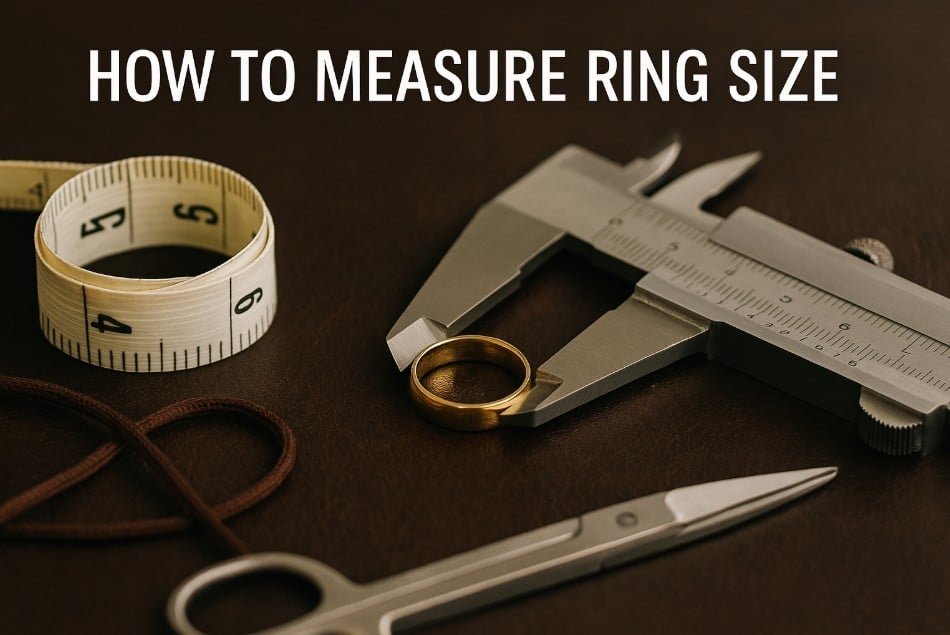
Want to measure your ring size accurately? A professional jeweler shares these essential tips.
Use a flexible, non-stretchable material like paper or string.
Wrap snugly at the base of your finger, not too tight.
Measure at room temperature for the most accurate fit.
Avoid sizing after workouts or early in the morning.
Measure the exact finger and hand you'll wear the ring on
Repeat the measurement 2–3 times for consistency.
Use a millimeter ruler for precise length measurement.
Compare your measurement with a trusted ring size chart.
Size up slightly for thicker or wider band styles
Choose comfort over tightness—rings should slide on smoothly.
Rang
Following these expert tips will help you avoid resizing hassles and ensure a comfortable, secure ring fit every time.












